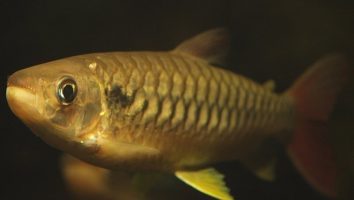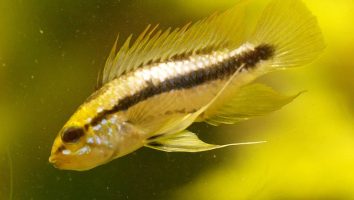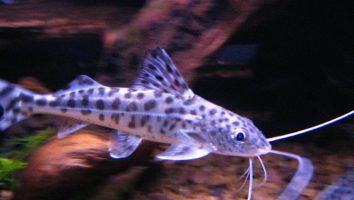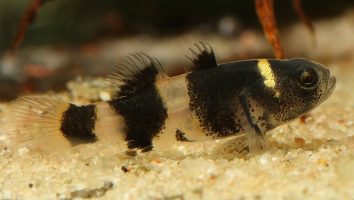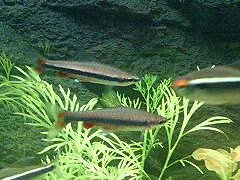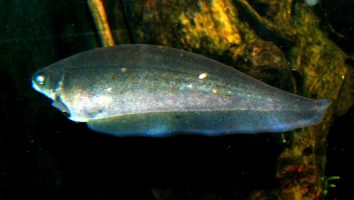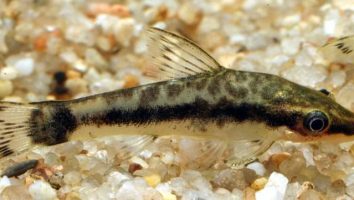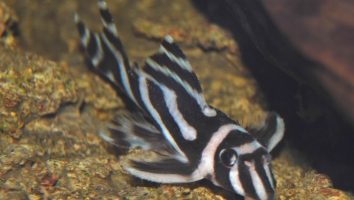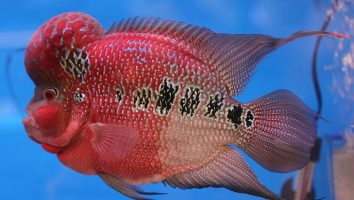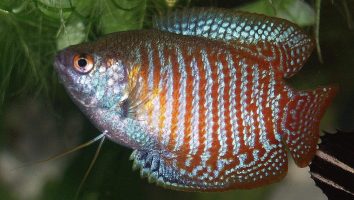The striped sleeper goby is a beautiful freshwater fish that is perfect for the beginner aquarist. They are very hardy and can tolerate a wide range of water conditions.
This guide will teach you everything you need to know about striped sleeper goby care. You’ll learn about their diet, size, lifespan, and more!
Table of contents
Species overview
The striped sleeper goby ( scientific name: Valenciennea strigata) is a type of fish that is most commonly found in brackish or saltwater habitats in various parts of Southeast Asia.
They prefer habitats with a sandy bottom and plenty of places to hide, such as coral reefs.
The striped sleeper goby is a nocturnal fish, which means that it is most active at night. During the day, it will often sleep in a burrow that it has dug in the sand.
These fish are relatively small, only growing to be about 3-4 inches in length.
They are peaceful fish that get along well with other tank mates.
Appearance
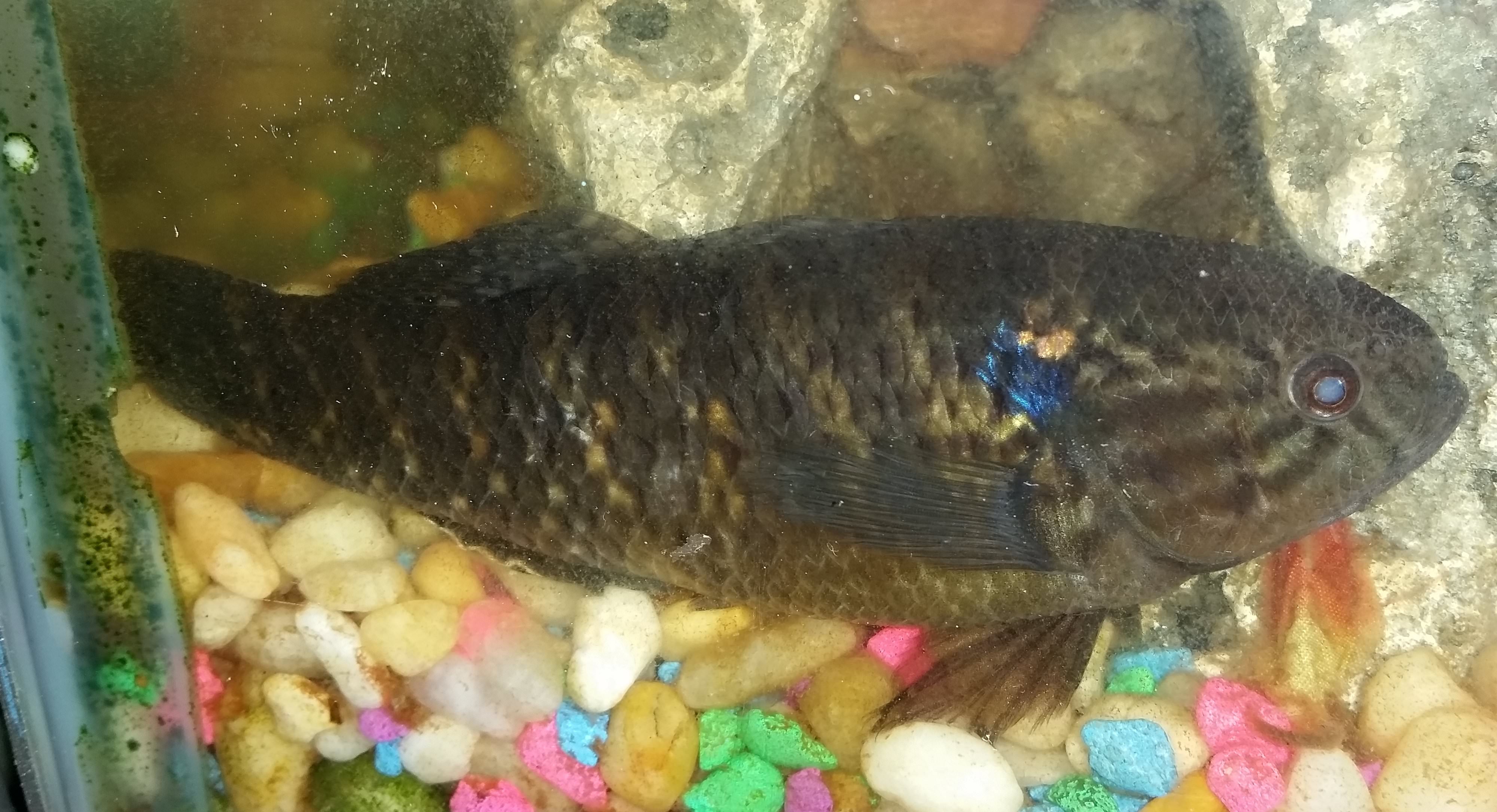
The first thing you’ll notice about these fish is their unique coloration. As the name suggests, they have wide dark stripes going down their bodies.
These stripes are a deep black or blue color. They stand out quite a bit against the rest of the fish which is a pale white color. The white can sometimes have a slight pinkish hue to it as well.
The dorsal fins on these fish are tall and thin. They start about halfway back on the body and extend all the way to the end of the caudal peduncle.
The anal fin is shorter and sits just behind the dorsal fin. Both of these fins have a slight curve to them and are somewhat pointy at the tips.
The caudal fin is forked and rather tall. It’s wider at the base and tapers down to a point at the tips.
The pectoral fins are small and sit close to the head of the fish. They’re thin and have a slight curve to them.
The ventral fins are also small and thin. They’re located just behind the pectoral fins and have a similar shape.
These fish have a long and thin body that tapers down at the ends. Their heads are rather small and pointed with large eyes.
Lifespan
The lifespan of a striped sleeper goby is around 3-5 years. This fish is a bit on the delicate side so they don’t usually live as long as some of the other freshwater fish out there.
There are a few things that can impact the lifespan of a striped sleeper goby. One is the quality of the water they’re in. If the water is too dirty or has the wrong pH levels, it can shorten their lifespan quite a bit.
Another factor is whether or not they are stressed. These fish are very sensitive to changes in their environment so things like a new tank mate or a new piece of decor in their tank can cause them a lot of stress. That stress can lead to illness and an early death.
Size
The maximum size for a Striped sleeper goby is around 4 inches, but they are more typically around 2-3 inches in length.
Tank
Tank Size
For a single striped sleeper goby, we recommend a minimum tank size of 20 gallons. If you’re looking to keep a pair of these fish together, you should have a tank that’s at least 30 gallons.
As with most other fish, a larger tank is always better. This will give the fish more room to swim around and explore. It will also provide more stability in the event of a power outage or other emergency.
Water Parameters
The striped sleeper goby is a peaceful, hardy, and easy to care for fish that does well in a wide range of water conditions. They’re a great choice for beginner hobbyists or anyone looking for a low-maintenance pet fish.
One of the reasons they’re so easy to care for is that they’re not picky when it comes to water parameters. As long as the water is clean and the temperature is within the range of 70-80 degrees Fahrenheit, they’ll be happy.
Here are a few other things to keep in mind when it comes to caring for your striped sleeper goby.
- pH levels: 6.5-8.0
- Water hardness: 5 to 19 dGH
- Alkalinity Levels: 3-10 dKH
What To Put In Their Tank
When it comes to setting up an aquarium for a Striped Sleeper Goby there are a few things you’re going to want to keep in mind.
First and foremost, this species of fish comes from brackish water environments. This means that you’re going to need to add some salt to their tank (we recommend using marine salt). The general rule of thumb is 1 tablespoon per 5 gallons.
You’re also going to want to make sure that the inside of their tank has plenty of hiding spots. This can be in the form of caves, plants, or even driftwood. They’re not a particularly shy species, but they do like to have a place to retreat to when they feel the need.
The substrate you use is also important. Gobies are bottom-dwellers so they’re going to spend a lot of time in contact with it. A soft, sandy substrate is ideal since it’s easy on their bellies and won’t damage their fins.
Common Diseases
While the striped sleeper goby is a hardy fish, there are still a few diseases that can affect them. The most common one is probably ich, which is a parasite that manifests as white spots on the body of the fish.
This can be treated with medication, but it’s important to catch it early. If you wait too long, the ich can spread and become fatal.
Another disease to look out for is hole-in-the-head disease. This is caused by poor water quality and the presence of activated carbon in the tank.
It presents itself as one or two pits/holes in the head of the fish. While it’s almost always curable, it will usually leave some scarring on your poor fish!
The best way to prevent these diseases is to maintain the quality of the water in your tank. A tank with clean and stable water conditions is always the best way to keep your fish healthy and happy.
Behavior & Temperament
The striped sleeper goby is a peaceful fish that spends most of its time buried in the sand at the bottom of the tank.
They are known to be active during the night, which is when they will come out to scavenge for food. During the day, they will often be seen hiding in their burrows or among the rocks and coral in the tank.
Even though they are peaceful, they can be territorial with other gobies. So, it is best to keep only one striped sleeper goby per tank unless you have a very large tank.
Tank Mates
The striped sleeper goby is a peaceful fish that does well in community tanks. They’re not aggressive and get along with most species.
Because they come from brackish waters, it’s important to choose tank mates that can tolerate a higher salt content. The good news is that there are plenty of species that fit this bill.
Some good striped sleeper goby tank mates include:
- Bumblebee Goby
- Fiddler Crab
- Mudskippers
- Mollies
- Platies
- Swordtails
- Weather Loach
Breeding
The breeding process for these fish is a bit more difficult than some of the others on this list. They’re not the most common fish in the hobby, so there’s not as much information out there.
The first step is to set up a breeding tank. It should be at least 30 gallons and have a sandy substrate. You’ll also need some rocks and hiding places for the fish.
Next, you need to adjust the water parameters. The temperature should be between 74 and 82 degrees Fahrenheit. The pH should be between 7.5 and 8.5. The water hardness should be between 10 and 20 dKH.
When everything is set up, it’s time to add the fish. You’ll need one male and two females. It can be difficult to sex these fish, but a good rule of thumb is that males are usually smaller.
The breeding process will start with the male building a nest. He’ll use his mouth to dig a small pit in the sand. Then, he’ll start to collect rocks and other materials to build up the sides of the nest.
Once the nest is complete, the male will start to court the females. If everything goes according to plan, the females will lay their eggs in the nest.
The male will then fertilize the eggs and start to guard them. He’ll fan them with his fins to keep them oxygenated and clean them if they get dirty.
After about a week, the eggs will hatch. The fry will be very small, so you’ll need to feed them live foods. Baby brine shrimp are a good option.
As they grow, you can start to add other foods to their diet. They’ll eventually be able to eat pellets and flakes.
Conclusion
The striped sleeper goby is a great fish for beginner aquarists. They’re easy to care for and don’t need a lot of attention.
They’re also a very peaceful fish, so they’re perfect for community tanks.
If you’re looking for a low-maintenance fish that will add some beauty to your tank, the striped sleeper goby is a great choice!

